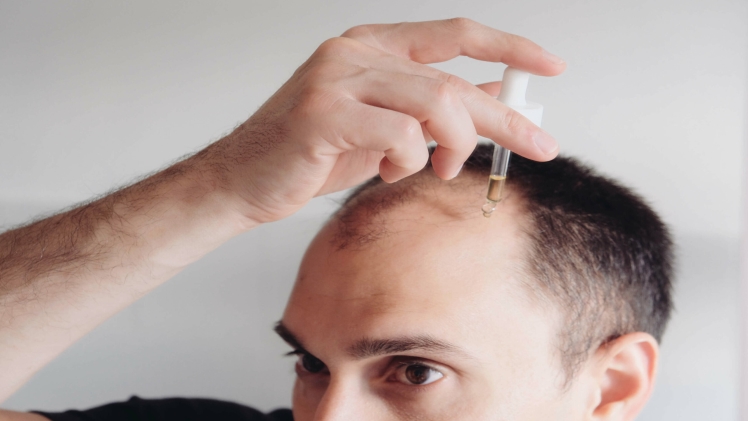There are several reasons why women should consider using minoxidil to treat a receding hairline. It can thicken hair, improve its density, and make it healthier. It can also reduce the appearance of a receding hairline. However, there are also several side effects to consider before beginning any treatment.
Treatment of a receding hairline with minoxidil
Minoxidil is an FDA-approved topical drug that is often used for hair loss. It stimulates hair growth by improving blood flow to the treated area. It can be applied to the entire scalp or targeted areas, such as the hairline. In addition to fighting hair loss, minoxidil can improve hair density and thickness.
Receding minoxidil for hairline can also be a symptom of other health issues, so a consultation with a board-certified physician is recommended. According to dermatologist Neda Mehr, board-certified in Newport Beach, California, the most effective hair loss treatment involves addressing the underlying cause. This can include the genetic forms of androgenetic alopecia and internal causes of female-patterned hair loss.
As with any hair loss treatment, it is important to stick with a regimen and make it as effective as possible. Many factors contribute to hair loss, including lack of nutrition, stress, and the use of harsh products. One effective 5-step treatment includes a daily shampoo with Minoxidil, which should be applied to the scalp twice a day.
Side effects
Minoxidil is a topical treatment that stimulates hair growth and slows balding. It is usually prescribed for younger people who are prone to hair loss and receding hairlines. However, minoxidil does not work on women over 40 and does not cure baldness. It is applied to the scalp in a liquid or foam form. The best way to use it is to apply a small amount to the affected area twice a day. Make sure to read all directions on the package to ensure that you are using the correct amount.
Before using female hairline, inform your doctor of any existing medications and allergies. The solution should not be used in your mouth, eyes, nose or bandages, nor should it be applied directly to the scalp. In addition, the medication should not be used if you are pregnant.
A two-year trial with more than 200 participants showed that minoxidil can cause skin irritation. Some brands of minoxidil contain propylene glycol, which is a synthetic liquid used to enhance solubility and help the medication reach the hair follicles. However, users of this compound have reported allergic reactions to it. Another ingredient in minoxidil is ethanol, which improves its solubility and absorption.
Pregnancy and hair loss medications
If you’re pregnant and worried about hair loss, there are some things you should know. While pregnancy is not the sole cause of receding hairline, there are many other factors that can contribute to the condition. A few of these include hormonal changes and hair loss medications.
If you’re experiencing hair loss, the best treatment will depend on the cause. Some medications can make the process of hair loss slower. For example, Rogaine, a topical solution that can reverse hair loss, is effective for some people. However, this treatment is only effective for male pattern baldness and works best in small areas.
Hair loss is a sign of many other health problems, so you should always consult a board-certified doctor. A board-certified dermatologist in Newport Beach, California, Neda Mehr, MD, says the first step is to identify the underlying cause. These factors can include internal or genetic causes of hair loss, such as androgenetic alopecia.
Effectiveness of minoxidil
Minoxidil is a synthetic drug approved by the FDA that stimulates hair growth. It works by increasing blood flow to hair follicles in the scalp and thus increases their size. This prolongs the active growth phase, which means that hair follicles will remain longer and thicker.
Although its effectiveness has not been extensively studied, minoxidil is effective at restoring the hairline. It works by increasing blood flow to the area, and has also been shown to increase hair growth rate and density. But more research needs to be done to discover its exact benefits for this condition.
Finally
One study concluded that minoxidil can promote thicker hair growth when applied topically to the scalp. However, to do this, it must penetrate the hair follicle and skin. This is not possible with other topical treatments. Minoxidil is a topical solution that needs to be applied twice a day to the affected area. The treatment should be applied gently and massaged into the scalp. It is then best to leave the hair to air dry and avoid washing it for at least four hours.

